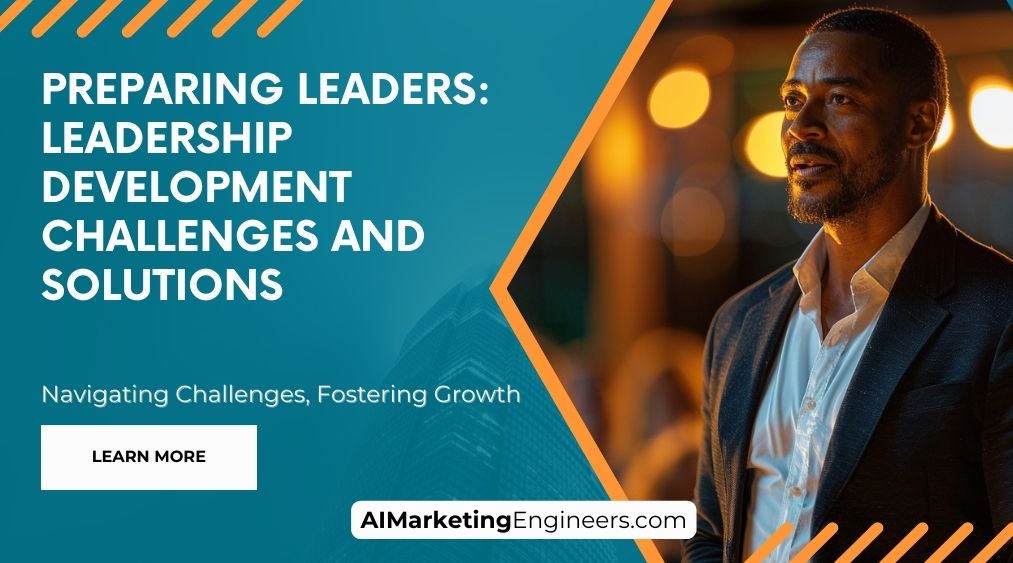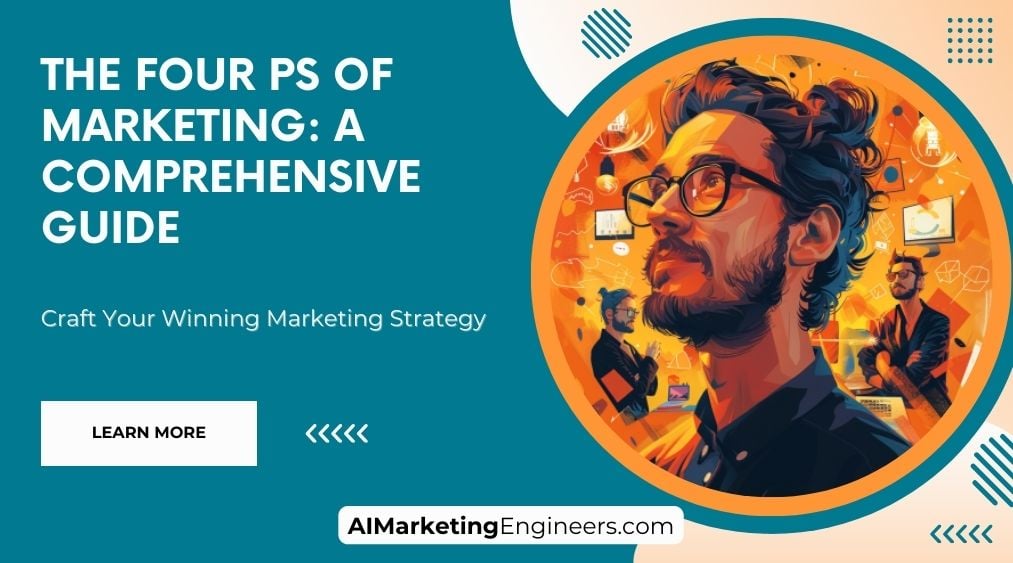Key Takeaways
✅ Personalization and Relevance: Leadership development isn't one-size-fits-all. Tailoring programs to fit individual strengths and addressing leaders' specific challenges can dramatically increase engagement and effectiveness. Stats show that personalized programs can boost leadership skills application by up to 40%. Recommendations include conducting thorough assessments and creating learning experiences that mirror real-life challenges.
✅ Empathy and Support: For leadership to flourish, empathy must be at the core. Empathetic leadership is linked to increased employee satisfaction and retention. However, 82% of employees feel they don't receive enough empathy from their leaders. Integrating empathy into development programs and fostering a supportive culture through mentoring and peer interactions is crucial.
✅ Measuring Success and Transferring Learning: A pressing issue in leadership development is the difficulty in measuring success and ensuring knowledge is applied in the workplace. Only 23% of companies believe they can effectively track the ROI of their leadership programs. Setting clear goals, conducting assessments, and providing ongoing support are key strategies to bridge this gap.
 Introduction
Introduction
Is your organization fully leveraging the potential of its leaders? Preparing Leaders: Leadership Development Challenges and Solutions is more than just a topic; it's a critical pathway to ensuring the sustainability and competitiveness of any organization. With the corporate world evolving at an unprecedented pace, the demand for strong and adaptable leadership is at an all-time high. Yet, many businesses are grappling with how to develop these essential skills effectively.
In this discussion, we delve into why effective leadership development is essential for your organization's success and the significant challenges it faces in creating impactful leaders. We'll uncover modern trends and solutions that not only aim to enhance leaders' abilities but also maximize the return on investment in their growth. Get ready to explore actionable insights and groundbreaking strategies that promise to transform the traditional approach to leadership development. Engage with us as we delve into the solutions that align with the ever-changing business environment, ensuring leaders are prepared to navigate the complexities of the modern world.
Top Statistics
| Statistic | Insight |
|---|---|
| 86% of HR professionals consider leadership readiness the most significant challenge. | This number highlights the gap in leadership skills within organizations, pointing toward an urgent need for comprehensive leadership development programs. |
| 94% of executives express dissatisfaction with their leadership development efforts. | A glaring indicator that current leadership training programs may not be as effective or engaging as needed for executive satisfaction. |
| Only 30% of leaders feel adequately prepared for their leadership roles. | This statistic sheds light on the self-perceived readiness of leaders, emphasizing the necessity for more targeted and robust development strategies. |
| Leadership training increases productivity by 25%. | The significant boost in productivity underscores the direct impact of effective leadership development on organizational performance. |
| Companies with diverse management teams report 19% higher revenue. | This statistic emphasizes the importance of diversity and inclusion within leadership roles, linking it directly to improved financial outcomes. |
Recognizing Challenges in Leadership Development
Leadership development isn't just a buzzword; it's a foundational element for organizational triumph. Yet, hitting the nail on the head with effective leadership development is nothing short of a tightrope walk. Businesses grapple with myriad hurdles, from setting clear goals to forging robust training environments. One often overlooked aspect is the lack of clear goals and objectives. It's like setting sail without a compass; without direction, leadership development efforts can drift into the abyss. This lack of clarity not only muddles the learning path for emerging leaders but also makes it challenging to measure progress or success. Moreover, inconsistent leadership expectations can create confusion and impede the growth of potential leaders.
Identifying Training Gaps and Needs
Equally pressing is the problem of insufficient training and development programs. Traditional training models are increasingly proving to be relics of the past, ineffective in the face of evolving leadership demands. Static classroom-based training can't quite capture the dynamic skill set required by modern leaders. Additionally, a one-size-fits-all approach often fails to address the diverse needs and learning styles of potential leaders. This gap highlights the necessity for more interactive and personalized training methods. A lack of continuous learning opportunities further exacerbates this issue, leaving leaders without the tools to adapt to changing environments.
Importance of Feedback and Coaching
Another critical challenge is inadequate feedback and coaching. Growth is a continuous loop, fueled by constructive feedback and actionable insights. Unfortunately, when this loop is broken or nonexistent, it stagnates potential leaders, leaving them to navigate their growth journey without a map. Regular and structured feedback sessions can significantly enhance a leader's development trajectory. Additionally, fostering a culture of open communication encourages leaders to seek and provide feedback actively. Without proper coaching, emerging leaders might miss out on essential skills and perspectives necessary for their roles.
Succession Planning and Talent Management
Lastly, succession planning and talent management often take a backseat. Organizations that overlook grooming future leaders find themselves in a leadership vacuum when key positions become vacant, jeopardizing continuity and stability. Proactive succession planning ensures a steady pipeline of capable leaders ready to step up. Effective talent management strategies identify and nurture high-potential individuals early on. This approach not only secures the future leadership of the organization but also boosts employee morale and engagement.
Customized Leadership Development Programs
To counter these hurdles, adopting customized leadership development programs promises a refreshing change. Tailored programs that align with the unique needs and goals of an organization can create a more engaging and relevant learning experience, ensuring that each leader receives the right tools and knowledge to succeed. Personalized development plans cater to individual strengths and areas for improvement. This bespoke approach fosters deeper engagement and commitment from participants. Furthermore, customized programs can quickly adapt to evolving business needs and leadership challenges.
Mentorship and Coaching Benefits
The power of mentorship and coaching can't be overstated. These personal, one-on-one relationships provide real-time, candid feedback and practical, experiential learning opportunities that no textbook can match. They help build confidence, foster growth, and unlock potential in ways that formal training programs often cannot. Mentorship bridges the gap between theoretical knowledge and practical application. Regular coaching sessions create a supportive environment for ongoing development. This hands-on approach accelerates learning and skill acquisition.
Leveraging Technology for Leadership Development
Leveraging technology-enhanced learning is another pathway to accelerating leadership development. From online courses and simulations to social learning platforms, technology can offer flexible, accessible, and diverse learning experiences that cater to the varied learning styles of potential leaders. E-learning modules provide convenience and scalability. Virtual reality and AI-driven simulations offer immersive training experiences. Integrating technology ensures that leadership development keeps pace with the rapidly changing business landscape.
Effective Succession Planning and Talent Management
Implementing sound succession planning and talent management strategies is crucial. Organizations must actively identify and nurture high-potential individuals, ensuring a pipeline of ready leaders to step up when the need arises. Succession planning should be a continuous, dynamic process. Regular talent assessments help in tracking progress and readiness. This proactive approach minimizes disruptions and maintains organizational stability.
Aligning Leadership Development with Goals
Ensuring alignment with organizational goals makes sure that leadership development efforts are not just another item on the checklist but are integral to the company's overarching objectives. This synergy ensures that every development initiative propels the organization forward, in tune with its vision and goals. Alignment enhances the relevance and impact of development programs. It also ensures that leaders are equipped to drive the organization's strategic priorities. Regularly revisiting and adjusting development goals keeps them aligned with business objectives.
Engaging Stakeholders in Development
Involving stakeholders in the development process ensures buy-in and provides a 360-degree view of leadership needs and opportunities. From top executives to frontline employees, stakeholder engagement enriches the development process with diverse insights and shared commitments. Stakeholder involvement fosters a sense of ownership and accountability. It also helps in identifying real-world challenges and opportunities. Collaborative development efforts ensure comprehensive and practical leadership solutions.
Continuous Evaluation and Refinement
Lastly, the importance of evaluating and refining leadership development programs cannot be overstated. Regular assessment helps in fine-tuning initiatives, ensuring they remain relevant, effective, and aligned with evolving organizational needs. Continuous improvement ensures that development efforts yield the desired outcomes. Feedback from participants can guide enhancements. This iterative process keeps leadership programs dynamic and impactful.
In summary, leadership development is a complex yet rewarding journey. With the right strategies and practices in place, organizations can not only overcome common challenges but also cultivate a generation of leaders ready to navigate the intricacies of today’s - and tomorrow's - business landscape. Embracing continuous learning and adaptation is key to sustained leadership success.
AI Marketing Engineers Recommendation
Recommendation 1: Emphasize Emotional Intelligence in Leader Development Programs. Studies show that leaders with high emotional intelligence (EI) have teams with higher morale, greater productivity, and better retention rates. According to the Harvard Business Review, leadership programs that include EI have improved leadership effectiveness by up to 48%. Businesses should integrate EI training into their leadership development initiatives to cultivate leaders who can adapt to diverse team dynamics, manage stress effectively, and make more empathetic decisions.
Recommendation 2: Leverage Data Analytics to Personalize Leadership Learning Paths. As per the latest trends, customized learning experiences are proving to be more effective than one-size-fits-all approaches in leadership development. Utilizing data analytics can help identify individual leaders' strengths and development needs, tailoring programs that are most relevant to their growth. For instance, incorporating big data into leadership development could increase ROI on training by pinpointing key areas of focus for each leader, subsequently driving better organizational outcomes.
Recommendation 3: Incorporate Mentorship and Coaching as Core Components of Leadership Development. Real-world application and feedback are critical in cultivating leaders who are ready to face current and future challenges. Figures indicate that 71% of Fortune 500 companies have mentoring programs, linking their success to these initiatives. Implementing structured mentorship and coaching opportunities for emerging leaders not only accelerates their growth but also prepares them more effectively for real-life challenges by providing them with guidance, feedback, and increased opportunities for reflective learning.
Conclusion
In wrapping up, it's clear that the journey of Preparing Leaders is fraught with hurdles, yet it's equally packed with robust solutions that can turn these challenges into stepping stones for organizational success. From the fog of unclear goals to the stark need for improved training methods, the landscape of leadership development demands attention, innovation, and commitment. Through this article, we've waded through the complexities of shaping future leaders, highlighting how unclear objectives, inadequate training, and poor feedback mechanisms can put a damper on leadership aspirations.
However, rather than leaving us in a quagmire of problems, we've journeyed through a variety of solutions poised to elevate leadership development. Tailored programs, mentorship, and savvy use of technology emerge not just as options, but as necessities for organizations looking to thrive. Furthermore, by aligning development programs with organizational goals and ensuring thorough stakeholder involvement, we pave a clearer path for upcoming leaders.
In essence, the essence of preparing effective leaders lies not just in acknowledging the challenges but in vigorously pursuing innovative solutions. Customized leadership development programs, strategic successor planning, and a commitment to continuous improvement stand out as indispensable pillars for fostering an environment where leaders can thrive. As organizations wrestle with these challenges and solutions, the question remains: How committed are we to the hard work of turning potential into performance?
It's high time we viewed leadership development not as a hurdle but as an opportunity—a chance to inspire, innovate, and implement strategies that will serve not only current but future generations. With the insights from this article, we have a roadmap; the journey ahead is ours to embark upon.
FAQs
Question 1: What is the importance of leadership development in organizations?
Answer: Leadership development is crucial for the success and growth of companies and employees. It helps cultivate a sustainable leadership culture, drives ongoing success, and prepares leaders for future challenges.
Question 2: What are the common challenges in bridging the gap between leadership theory and practice?
Answer: Common challenges include limited opportunities for growth, resistance to change, bias and diversity issues, and work-life balance concerns. These can be addressed through experiential learning, personalized development programs, and a supportive organizational environment.
Question 3: What are the key strategies for ensuring effective global leadership?
Answer: Strategies include continuous learning and development, mentorship and coaching programs, and evaluating the impact of leadership development programs. These help leaders stay relevant and effective in an ever-changing environment.
Question 4: How can organizations manage the needs of a multigenerational workforce?
Answer: Managing a multigenerational workforce involves understanding differences in communication styles, expectations, and values. Companies should be clear about their mission, vision, and values, and respect and appreciate the diversity of their workforce.
Question 5: What is the role of technology in modern leadership development?
Answer: Technology plays a significant role in making leadership development more accessible, interactive, and personalized. It includes immersive learning experiences, AI-powered learning, and virtual reality (VR) training, which provide hands-on learning opportunities.
Question 6: How can organizations balance long-term and short-term business requirements in leadership development?
Answer: Balancing long-term and short-term requirements involves investing in talent development that aligns with the organization’s mission and vision. This can be achieved through on-the-job learning, stretch assignments, and internal coaching, which are cost-effective and effective in developing talent.
Question 7: What are some effective leadership development training activities?
Answer: Effective activities include mentoring and coaching programs, rotational assignments and stretch projects, leadership workshops and seminars, team-building exercises and simulations, and action learning projects and real-world challenges. These activities help employees enhance their leadership skills and apply them in practical situations.
Question 8: How can organizations encourage managers to develop their teams?
Answer: Encouraging managers to develop their teams involves investing in internal coaching and on-the-job learning. This helps develop talent cost-effectively and fosters a culture of continuous learning and development.
Question 9: What are the benefits of scenario planning in leadership development?
Answer: Scenario planning helps leaders prepare for future challenges by simulating real-world scenarios. It enhances their ability to recognize, assess, and react to changing conditions, making them more effective in navigating complex while situations.

Academic References
- Harvard Business Publishing. (2023). 2023 Global Leadership Development Study: Ready for Anything. This study highlights the need for leaders to be prepared for uncertain future challenges and emphasizes the importance of recognizing, assessing, and reacting to changing conditions.
- Deloitte. The Gap Between Theory and Practice in Leadership Development. The study reveals that only 14% of companies consider their leadership development programs excellent, indicating a significant gap between theory and practice.
- Organizational Leadership EDU. Preparing for Future Leadership Challenges. The article emphasizes the importance of continuous learning, mentorship, and scenario planning in preparing current and aspiring leaders for future challenges.
- SIGMA. Leadership Development Challenges. The study identifies 14 key challenges in leadership development, including managing multigenerational workforces, lack of support from senior leadership, and linking development back to business strategy.
- WorkRamp. Navigating Leadership Challenges in a Dynamic Global Landscape. The article discusses strategies for effective global leadership, including continuous learning, mentorship, and evaluating the impact of leadership development programs.













